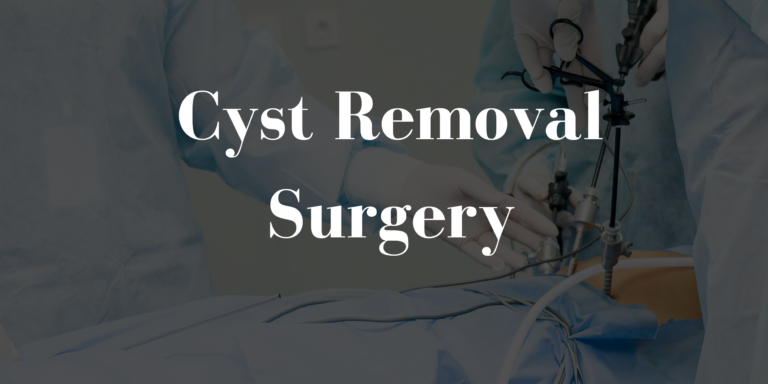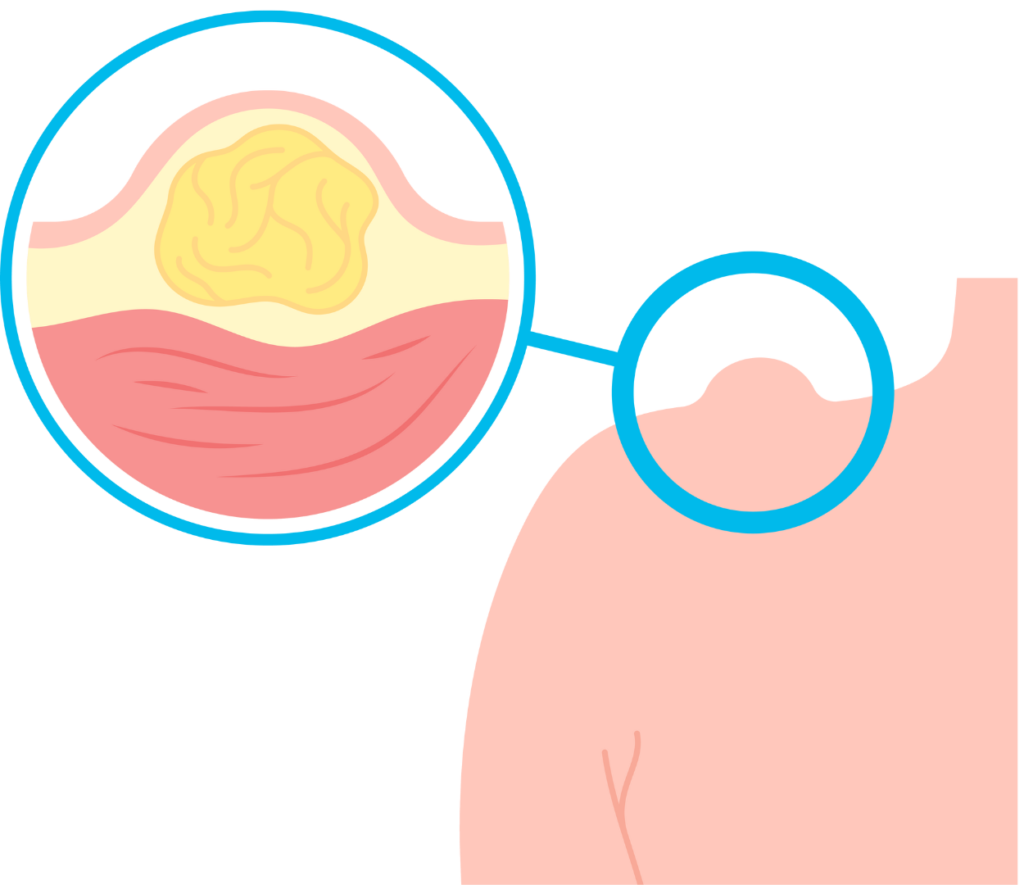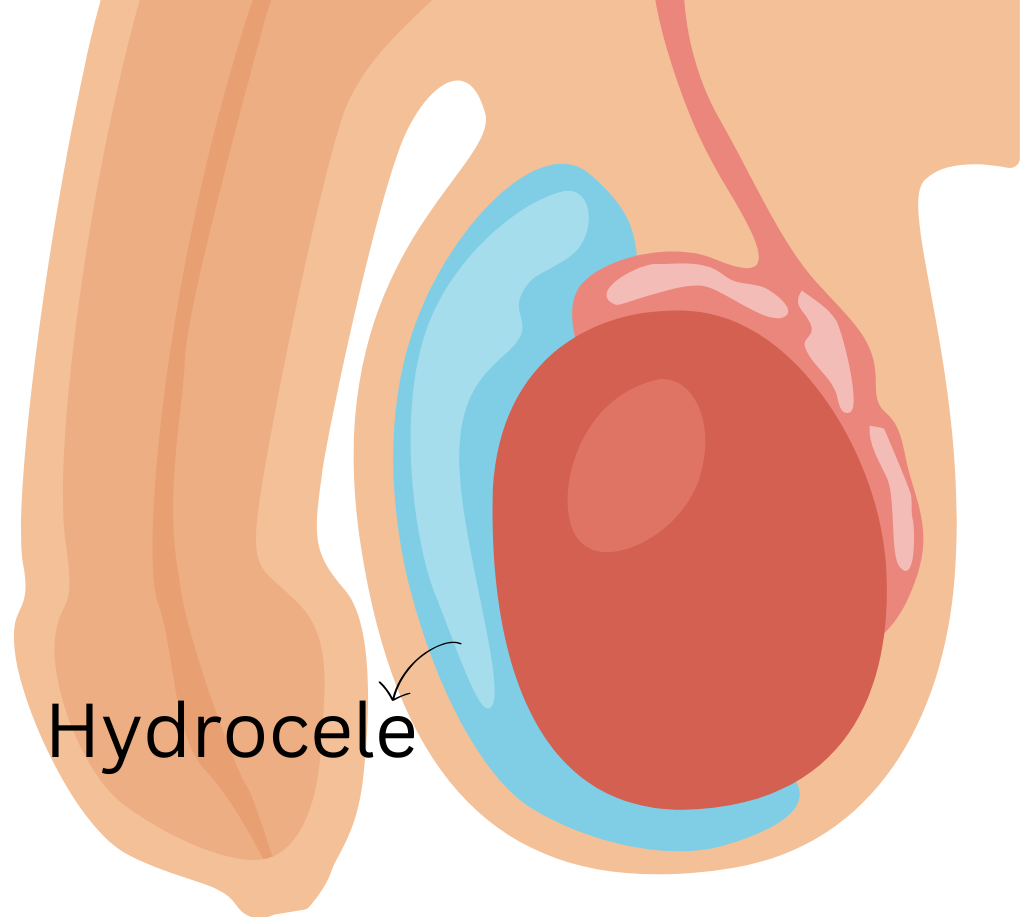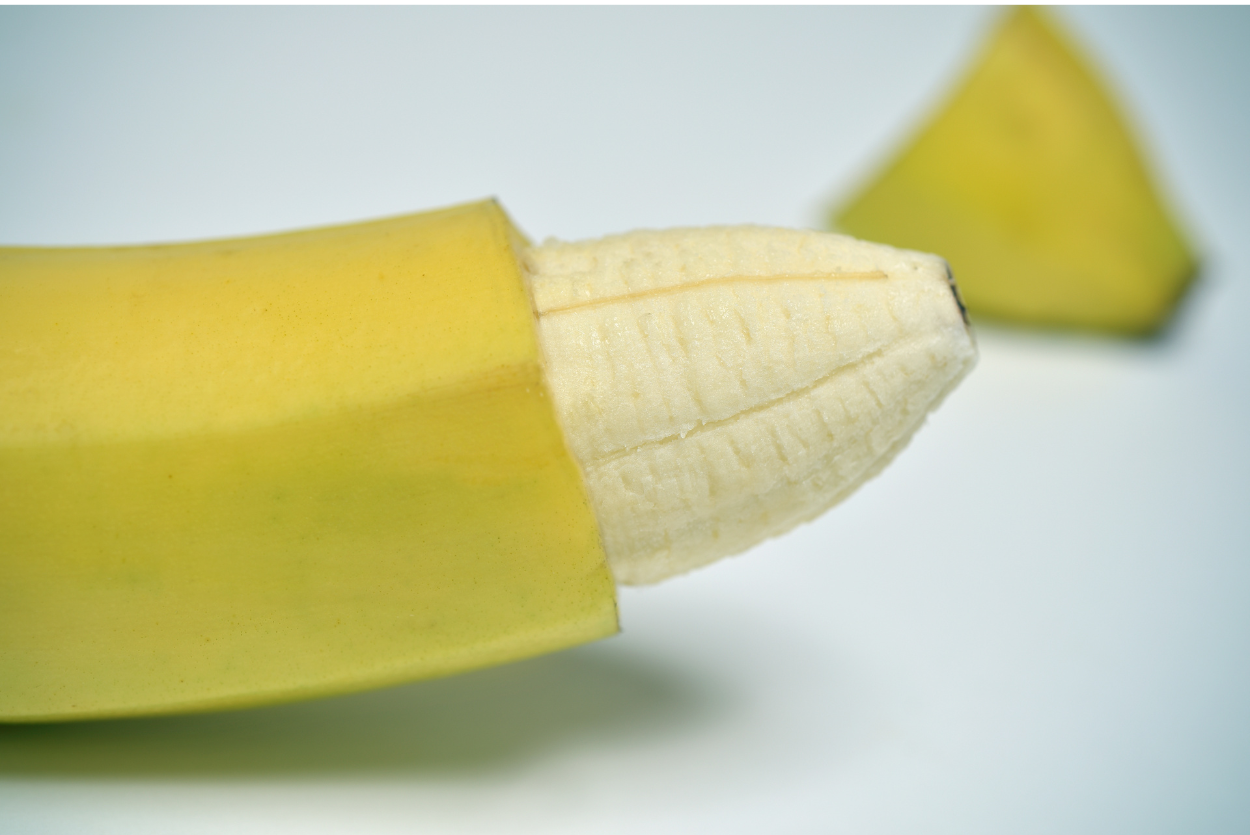
Cyst removal surgery, or cystectomy, involves surgically extracting fluid-filled sacs (cysts) from the body, often performed under local anesthesia, and can be done through methods like incision and drainage or complete cyst removal to prevent recurrence.
- While generally benign, they can cause discomfort, pain, or other symptoms depending on their size, location, and potential for infection.
- Cysts can develop in various locations, including the skin (sebaceous, pilar, pilonidal), ovaries, joints (ganglion, Baker’s), and other areas.
How It works?
Cyst removal surgery, or cystectomy, involves removing the entire cyst, including its capsule, through a small incision, often under local anesthesia, with options for minimally invasive laparoscopic procedures or, in some cases, open surgery
Few of Cystectomy surgeries:
I. Lipoma, Dermoid Cyst, Sebaceous Cyst, Papilloma, Wart Excision:
- Lipoma: A benign, fatty tumor. Often soft and mobile under the skin. Surgical excision is the primary treatment, especially for larger lipomas or those causing pressure or pain.
- Dermoid Cyst: A type of cyst that develops from skin and skin appendages (like hair follicles and sebaceous glands). Often found in the head and neck region.
- Sebaceous Cyst (Epidermoid Cyst): A common benign cyst filled with keratin and often mistaken for a sebaceous cyst. Can develop when skin cells accumulate under the skin instead of being shed.
- Papilloma: A benign, wart-like growth on the skin or mucous membrane. Can be caused by human papillomavirus (HPV).
- Wart: A benign skin growth caused by HPV infection.
For benign skin lesions like lipomas, dermoid cysts, sebaceous cysts, papillomas, and warts, surgical excision is often the definitive treatment, aiming for complete removal of the lesion and its capsule to prevent recurrence



Pilonidal sinus surgery aims to remove the sinus tract and surrounding infected tissue, with various techniques available depending on the severity and recurrence history, including incision and drainage, wide excision, and flap procedures.
- A pilonidal sinus is a small hole or tunnel under the skin in the natal cleft (the area between the buttocks) that can become infected.
Pilonidal sinuses can become infected and form abscesses, requiring surgical intervention, especially in cases of recurrent infections.
II. Pilonidal Sinus Surgery:

Hydrocele surgery, or hydrocelectomy, is a procedure to remove a hydrocele, a fluid-filled sac around a testicle, often performed as a day procedure with a small incision, draining the fluid, and sometimes removing the sac.
- A hydrocele is a collection of fluid in the scrotum, around the testicle, that can cause swelling.
- It can occur in baby boys, older boys, and men.
- Hydroceles can be on one or both sides of the scrotum.
III. Hydrocele Surgery:

Circumcision surgery involves removing the foreskin, the tissue covering the tip of the penis, and can be performed on newborns, infants, children, or adults, with varying procedures and recovery times depending on age and individual factors. Circumcision is associated with a slightly lower risk of urinary tract infections, penile cancer, and some sexually transmitted infections.
